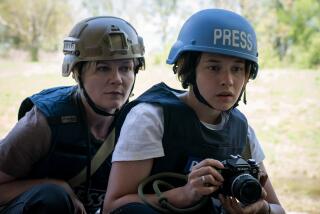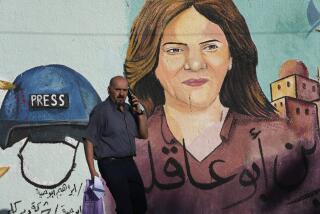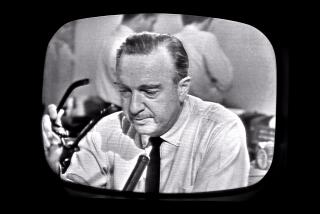Live From the Persian Gulf
Hour after hour, Americans can get something unmatched in history--an unfiltered impression of war in television’s vivid color--including incoming missiles exploding, tracers stitching seams in the night, captured fliers confessing error in wooden phrases. But what are we learning?
The overall quality of the facts from the Persian Gulf today may be no better than for any war. Because the war is being fought out of sight--except for the lenses of gun cameras--what Americans know about it at this point is what their government wants them to know. That puts a heavy burden on the public. Eventually it will put a heavier burden on government, which is going to have to improve its own reports to the people if it expects to maintain public support in a long conflict.
In the early hours of the war, the raw and instant impressions on the screen were an unmitigated blessing, if only because cameramen and reporters--particularly on CNN--created an instant awareness that the nation was really at war. But all too often since then, the value of instant access to a picture is less incontrovertible. Sometimes nobody can explain precisely what the camera is seeing at the moment; more important, no one can say whether what is on the screen has any meaning. Perhaps what many Americans most want to know at this point is what the bombing campaign has accomplished. On Tuesday the Pentagon acknowledged that even the military does not have a “fully accurate picture” of damage inflicted, essential for weighing what to do next.
As in any war, combat in the Persian Gulf is such loosely organized chaos that even seasoned war correspondents need to back away from the action to sort it all out before they start trying to describe it. The blur of unfiltered impressions provided by television in effect turns viewers into self-taught war correspondents, a role few can--or should be expected to--handle. By contrast, print journalism labors under one obvious handicap and offers one obvious advantage. It is not remotely as immediate as television, but in some ways this can be a virtue. The very laborious procedure by which print news travels from the correspondent to the reader is an editorial process that emphasizes editing, checking and the providing of context, which is not to say the process is foolproof by any means.
Consider: An American with access to a television set cannot fail to know about Soviet-built Scud missiles. Iraq at last count had fired more than 20 of them at Saudi Arabia and Israel. To know about the Scud is to also know about the U.S.-built Patriot anti-missile. That’s important, but the outcome of the war may not hinge as much on the outcome of the Scud-Patriot duel as perhaps TV pictures are suggesting.
So far, the battle to reclaim Kuwait from Iraq is an air war. Even if correspondents could hitchhike on combat missions--common enough in earlier wars--they could only lift the cover from a thin slice of the airborne campaign. Thus, it is up to the government to dig deeper for facts and weigh its claims carefully so that it is not in the position of claiming air superiority one day and denying superiority the next. It must try harder to avoid an answer that is of limited help to reporters and of none at all to the public: The briefing officer saying he will “have to get back to you on that.”
More to Read
The complete guide to home viewing
Get Screen Gab for everything about the TV shows and streaming movies everyone’s talking about.
You may occasionally receive promotional content from the Los Angeles Times.






